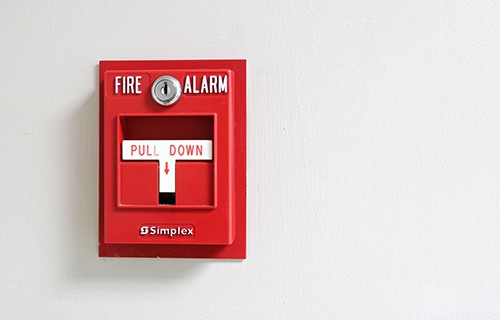In coming up with a well-designed emergency plan, the government mandates that every building or office institution must select a reliable group of people to be assigned to this task. This group essentially becomes the Emergency Planning Committee (EPC) responsible for coming up not only with the plan but also emergency response procedures and forming the Emergency Control Organisation (ECO).
The committee shall be composed of building owners, principal occupant representatives, the Chief Warden and other members with specialist knowledge. Once the Emergency Planning Committee is set up, the members must then move forward with developing the emergency plans and procedures, reviewing and improving the same, and establishing the ECO.
Responsibilities of the Emergency Planning Committee are as follows:
• Establish and implement emergency plans and procedures
• Determine the number of ECO personnel appropriate to the nature and risk of the facility
• Ensure appointments are made to all positions on the ECO
• Arrange for ECO personnel training
• Arrange for the conduct of evacuation exercises
• Ensure prompt replacement of any vacated ECO position
• Review the effectiveness of evacuation exercises and arrange for procedure improvements
• Determine who will implement emergency procedures
• Ensure that ECO personnel instructions overrule standard management structure during emergencies
Designing, Reviewing and Implementing Emergency Plans and Procedures
As the primary task of the Emergency Planning Committee is to come up with a workable emergency plan, they should be able to first make a conclusive assessment of the facility’s current state. The EPC must have some level of familiarity with the existing structure, and be able to identify the specific health risks and hazards present in the site. Based on these observations, the Emergency Planning Committee will then create the plan that will take into account this information.
Because the credibility of the emergency plan rests on the initial assessment of the site, the Emergency Planning Committee must ensure that it is made as comprehensively as possible, so as to not miss out on any pertinent detail. In making a complete examination of the site, they should also have the foresight as to the kinds of possible scenarios that can occur, and how quickly the emergency can escalate, particularly in sections where there is a potentially existing health hazard.
Depending on your jurisdiction, the emergency plan must also factor in the minimum inclusions mandated by the Queensland Building Fire Safety Regulations 2008 and Australian Standard 3745-2010.
Fire and Evacuation Plan
This plan is meant to be disseminated to all of the building’s occupants, and as such, must be able to lay out the steps and procedures expected to be carried out during an emergency. The goal is to make it as efficient as possible, such that the response and evacuation of the occupants will be safe and smooth. It should also contain the specific roles of people in charge, as well as their corresponding responsibilities and required actions in the face of an emergency situation.
The challenge of the Emergency Planning Committee in coming up with an emergency plan, such as for fire and evacuation, is to make it as universal and generic as possible. There should be special considerations, such as those that will apply to people with disabilities, but overall, the design must apply to all, for as much as possible.
This generic design should be able to ensure that the actions of the building occupants will be orderly, organised, and headed towards the same goal. It also makes it less prone to miscommunication, which, during a time of emergencies, can prove to be the factor that turns things from bad to worse.
Should there be specific tweaks made to the plan, it should apply only insofar as to the different types and levels of emergency, and not according to the individual preferences of the occupants.
Emergency Response Procedures
These procedures must be outlined clearly in the emergency plan, and should include the following:
• Instructions for evacuating a building and coordinating the evacuation of the building
• Types of emergency alarms and equipment and how they’re operated
• Procedures for giving fire and evacuation instructions to occupants
• Contact details for the primary building stakeholders
• Details and qualifications of the Fire Safety Advisor
• Procedures for specific emergencies relevant to the site
Implementation of Emergency Plans
An emergency plan designed by the EPC no matter how succinct and comprehensive it is will be rendered futile if these three important elements are not taken into proper consideration:
1. Dissemination – Again, the purpose of the emergency plans is for it to serve as a useful guide for the building occupants. Therefore, it only follows that it must be disseminated adequately to them so that they will be armed with the proper information. It is not for the EPC’s perusal only, otherwise, facilitating the procedures will be near-impossible, given that the people who should be acting out the steps out are not knowledgeable of what they should do.
2. Training – Being prepared on paper is one thing, being actually, physically prepared is another. There will be specific steps or procedures that will require demonstrations and training first before it can be safely said that the occupants can carry it out. Giving them the opportunity to practice these procedures can only better guarantee that they will know what to when the emergency situation does arise.
3. Exercises and Testing Procedures – After the training, the procedures must be exercised and tested to see whether all levels of emergency response, from management to individual occupants, are as tight and comprehensive as possible.
After the procedures have been tested and evaluated, the committee must also be keen to take note of possible areas of improvements. Amending the emergency plan should be easy to conduct and must ensure that the refinements are for the benefit of streamlining the process further.
Ideally, the plans should be formally reviewed and updated at these times:
• After every emergency
• Annually
• Whenever there are changes/renovations made to the building
• Whenever there are changes made to the organisation’s structure
All of these, from planning, coordination to facilitation, fall under the responsibilities of the Emergency Planning Committee. Because of the gravity of these committee obligations, therefore, it only makes it all the more critical that the chosen members are going to be able to fulfil their roles to their fullest capacity. The lives of the occupants, after all, do depend on them.








Leave A Comment